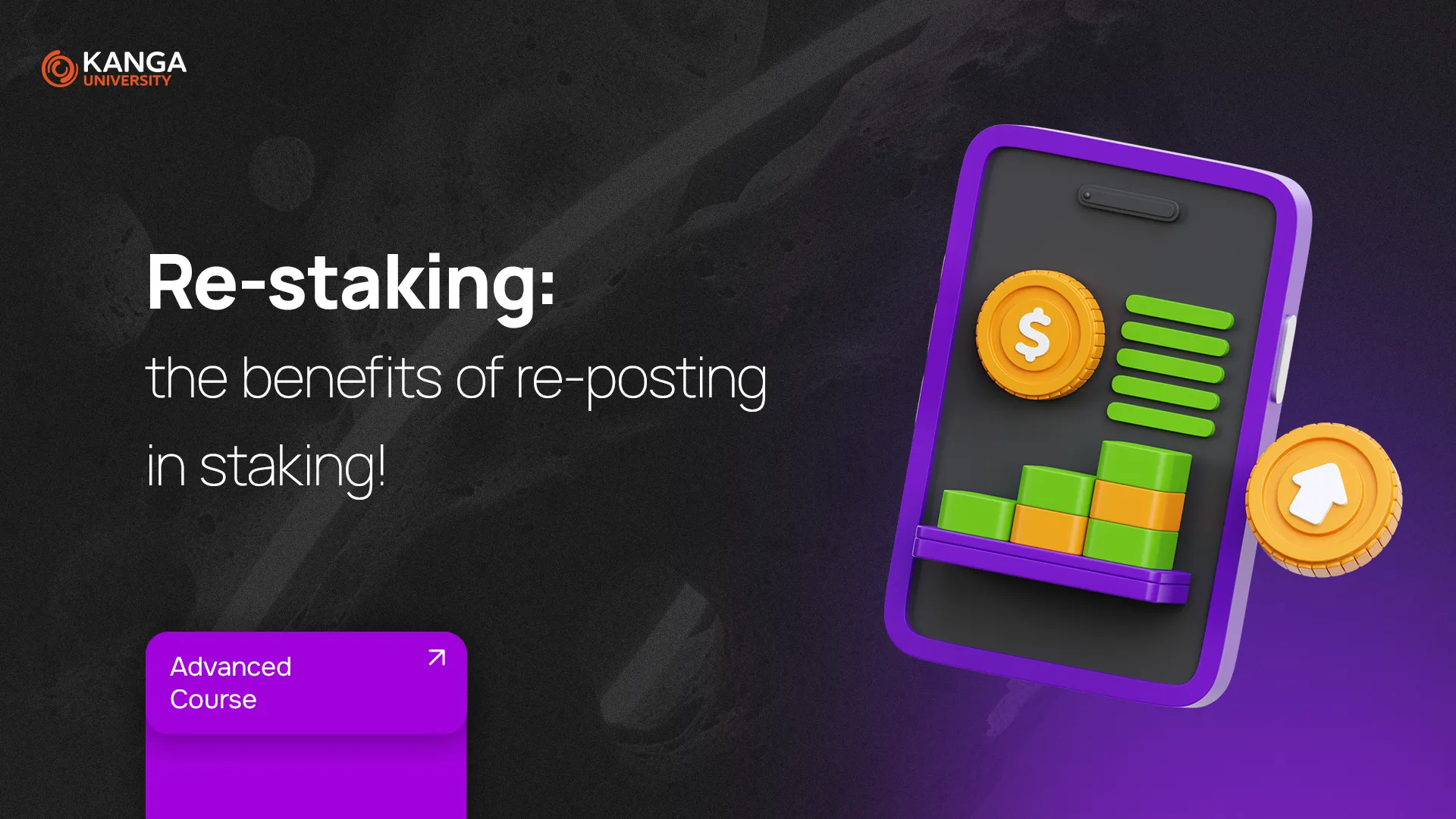
In the world of cryptocurrencies, staking—locking up your tokens to help secure a blockchain network—has become a standard way to earn passive income. But as the ecosystem evolves, new and more advanced strategies are emerging. One of them is re-staking, a method that allows investors to further boost their returns by reinvesting their staking rewards.
This lesson explores what re-staking is, how it works, and why it’s becoming increasingly popular among crypto users aiming for long-term growth.
What Is Re-staking?
Re-staking is a strategy where an investor reinvests their staking rewards—instead of withdrawing them—to increase their stake in a blockchain network. In simpler terms, it’s about compounding your earnings by putting them right back into the staking process.
To understand it better, take Ethereum as an example. With protocols like EigenLayer, users can re-stake their ETH or staking derivatives like stETH, rETH, or frETH. This means those tokens can be used not just in Ethereum’s staking system, but also to help secure other protocols. In return, users can earn additional rewards, beyond what they would normally get from just staking on Ethereum.
This multi-layered staking approach boosts returns while still supporting the security of multiple decentralized networks.
How Re-staking Works
Re-staking typically happens through an automated process. When users earn rewards from staking, they can choose to automatically reinvest those rewards into the same staking system. Rather than transferring the tokens back to their wallet or selling them, the system locks them again—growing the user’s total staked amount and increasing their chance of earning more rewards over time.
The strategy acts much like compound interest in traditional finance. For example, if you’re earning 5.5–6% APR on your ETH through staking, reinvesting your rewards can add an extra 2–4% annually, depending on the protocol.
Key Benefits of Re-staking
1. Higher earnings over time
By compounding your staking rewards, you significantly boost your returns. Re-staking builds on itself—each round of reinvested rewards increases your base, leading to more earnings in the future.
2. Stronger network contribution
When you re-stake, you’re not just growing your portfolio—you’re also increasing your share in securing the network. This helps enhance decentralization and reliability across blockchain ecosystems.
3. Hands-off strategy for passive income
If you prefer a more passive approach to investing, re-staking is ideal. Once set up, it can run automatically in the background, earning you rewards without constant management.
4. Long-term wealth optimization
Re-staking helps align your investment with long-term growth. Rather than trying to time the market, you focus on consistently increasing your position in the network.
Risks to Consider
Like any investment strategy, re-staking comes with risks:
-
Market volatility – Token prices can swing sharply, impacting the real value of your staked assets and rewards.
-
Protocol risk – Participating in multiple staking protocols adds layers of complexity and potential vulnerabilities.
-
Liquidity lock-up – Funds locked in staking can’t be easily withdrawn, reducing your flexibility during market shifts.
Before diving in, it’s important to understand the protocol you’re using and the overall market climate. Re-staking works best as part of a long-term strategy—not a quick win.
Summary
Re-staking is an advanced but accessible strategy for crypto investors who want to maximize their returns and deepen their role in blockchain networks. By reinvesting rewards, users increase their earning potential and help strengthen the systems they believe in.
As the DeFi landscape evolves, re-staking is becoming an essential tool for those who think long-term. However, it’s crucial to balance the potential for extra gains with the risks tied to market volatility and protocol complexity.